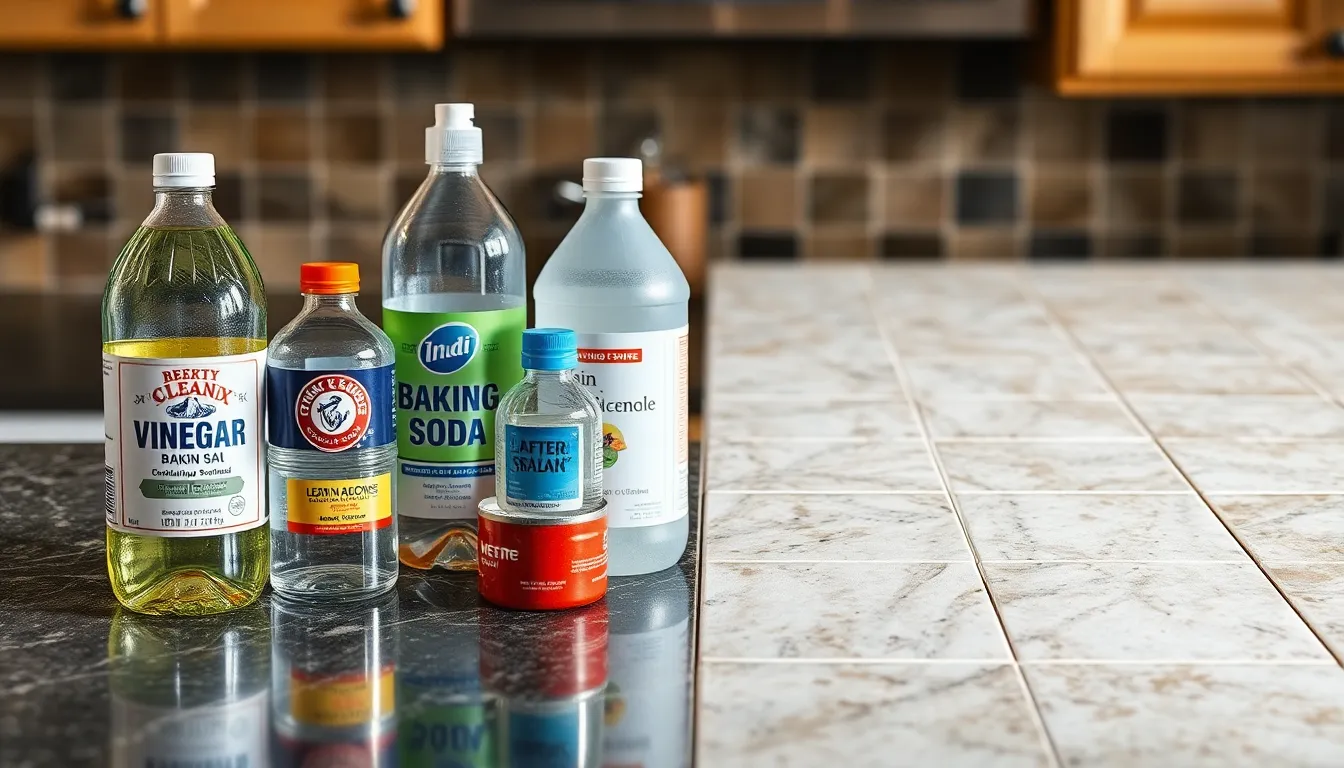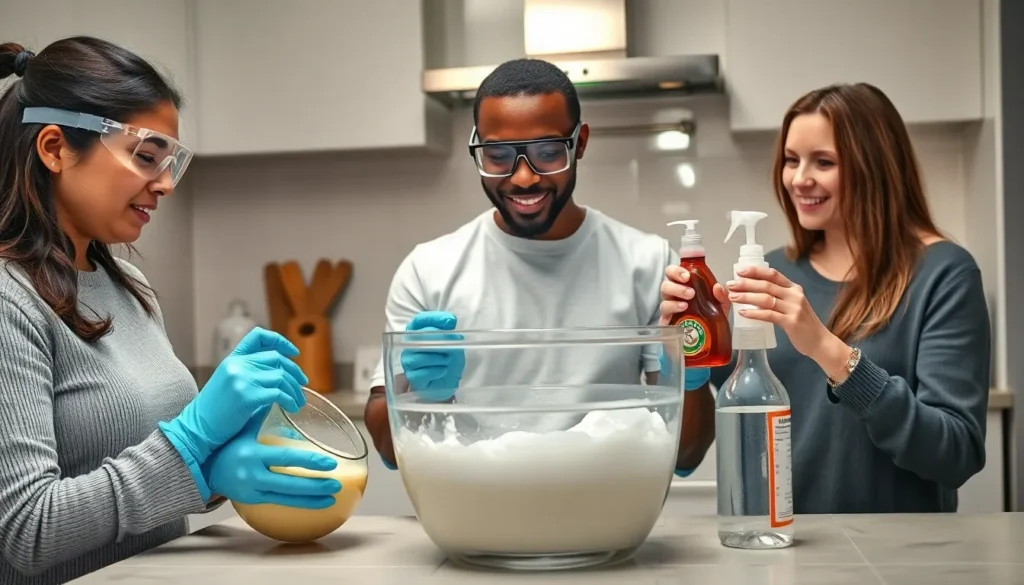Cleaning tiles can be a daunting task, especially when stubborn stains and grime seem impossible to remove. Neomanclotise, a tough adhesive often found on tiles, can leave surfaces looking less than pristine. Fortunately, making a homemade neomanclotise remover is simpler than many think. With just a few common household ingredients, anyone can whip up an effective solution that tackles these tough spots without damaging the tile. In this guide, readers will discover the step-by-step process to create their own neomanclotise remover. Not only will this DIY approach save money, but it’ll also provide a safe alternative to harsh commercial products. Get ready to restore your tiles to their former glory with a few easy-to-follow instructions.
How to Make Neomanclotise Remover for Tiles
Neomanclotise remover specifically targets neomanclotise, a robust adhesive commonly found on tiles. This product effectively dissolves strong bonding agents without damaging the tile surface.What Is Neomanclotise Remover?
Neomanclotise remover consists of a blend of solvents and surfactants designed to break down neomanclotise. It typically includes ingredients like vinegar, baking soda, or specialized solvents. These components work synergistically to loosen adhesive properties, making tile cleaning more efficient.Benefits of Using Neomanclotise Remover
-
- Cost-effectiveness: Homemade recipes reduce expenses compared to commercial cleaners.
-
- Non-toxic: Household ingredients minimize harmful chemical exposure.
-
- Efficient: Specific formulations target stubborn residues, ensuring thorough cleaning.
-
- Environmentally friendly: Using natural components fosters sustainability.
-
- Easy preparation: Simple steps make it accessible for anyone to create at home.
Ingredients Needed

Common Household Ingredients
-
- Vinegar: Acts as a natural solvent, effectively breaking down adhesive properties.
-
- Baking Soda: Enhances vinegar’s cleaning power while also providing mild abrasiveness for scrubbing away residue.
-
- Water: Dilutes other ingredients, ensuring proper mixing and application.
-
- Dish Soap: Works as a surfactant, helping to lift dirt and grime from the tile surface.
Specialized Ingredients
-
- Rubbing Alcohol: Adds additional solvent capabilities, targeting tough-to-remove neomanclotise.
-
- Essential Oils: Offers pleasant fragrances and potential antibacterial properties, enhancing the cleaning experience while promoting freshness.
-
- Hydrogen Peroxide: Serves as a strong oxidizing agent, assisting in breaking down stubborn adhesive residues more effectively.
Step-by-Step Guide
Creating an effective neomanclotise remover involves several straightforward steps. This guide provides clear instructions for preparing ingredients, mixing the solution, and applying the remover on tiles.Preparing the Ingredients
Gather the following ingredients for the homemade neomanclotise remover:-
- Vinegar: Use 1 cup of white vinegar for its natural acidic properties.
-
- Baking Soda: Measure 1/2 cup of baking soda, which acts as an abrasive cleaner.
-
- Water: Use 2 cups of warm water to help dissolve the mixture.
-
- Dish Soap: Add 1 tablespoon of dish soap to enhance cleaning efficiency.
-
- Optional Enhancers: Rubbing alcohol (1/4 cup) and a few drops of essential oil can be included for added efficacy and fragrance.
Mixing the Solution
-
- Combine Vinegar and Baking Soda: In a large bowl or container, combine the vinegar and baking soda. The mixture will bubble, indicating a chemical reaction. Allow it to settle until the fizzing stops.
-
- Add Water: Carefully pour in the warm water, mixing gently to prevent excessive bubbling.
-
- Stir in Dish Soap: Add the dish soap and stir the solution until it’s well combined. The mixture should be homogeneous and free of lumps.
-
- Incorporate Optional Ingredients: If using rubbing alcohol and essential oils, mix these in at this stage for enhanced properties.
Applying the Remover on Tiles
-
- Test an Inconspicuous Area: Always test the solution on a small, hidden tile section to ensure it won’t cause damage.
-
- Apply the Solution: Use a sponge or spray bottle to apply the neomanclotise remover directly onto the affected tile areas. Ensure thorough coverage, focusing on areas with visible adhesive.
-
- Allow to Sit: Let the remover sit for 10-15 minutes to penetrate the adhesive, breaking down the bond effectively.
-
- Scrub Gently: After the waiting period, use a soft-bristle brush or cloth to scrub the tiles. Rinse the area with warm water.
-
- Wipe Dry: Finish by wiping the tiles dry with a clean cloth to avoid water spots.
Safety Precautions
Safety precautions are essential when creating and using neomanclotise remover. Adhering to these guidelines helps ensure a safe and effective cleaning process.Protective Gear
Wearing protective gear enhances safety during the cleaning process. Recommended items include:-
- Gloves: Use rubber or nitrile gloves to protect skin from irritation and potential reactions with ingredients.
-
- Goggles: Wear goggles to shield eyes from splashes, especially while mixing or applying the solution.
-
- Mask: Opt for a mask to prevent inhalation of fumes or dust, particularly when working with dry ingredients.
Proper Ventilation
Ensuring proper ventilation reduces exposure to potentially harmful vapors. Steps to achieve this include:-
- Open Windows: Keep windows open to promote airflow and facilitate the dissipation of any fumes.
-
- Use Fans: Position fans to circulate air, helping to filter out strong odors during the cleaning process.
-
- Step Outside: Take breaks outdoors to refresh air intake and minimize prolonged exposure to any lingering vapors.
